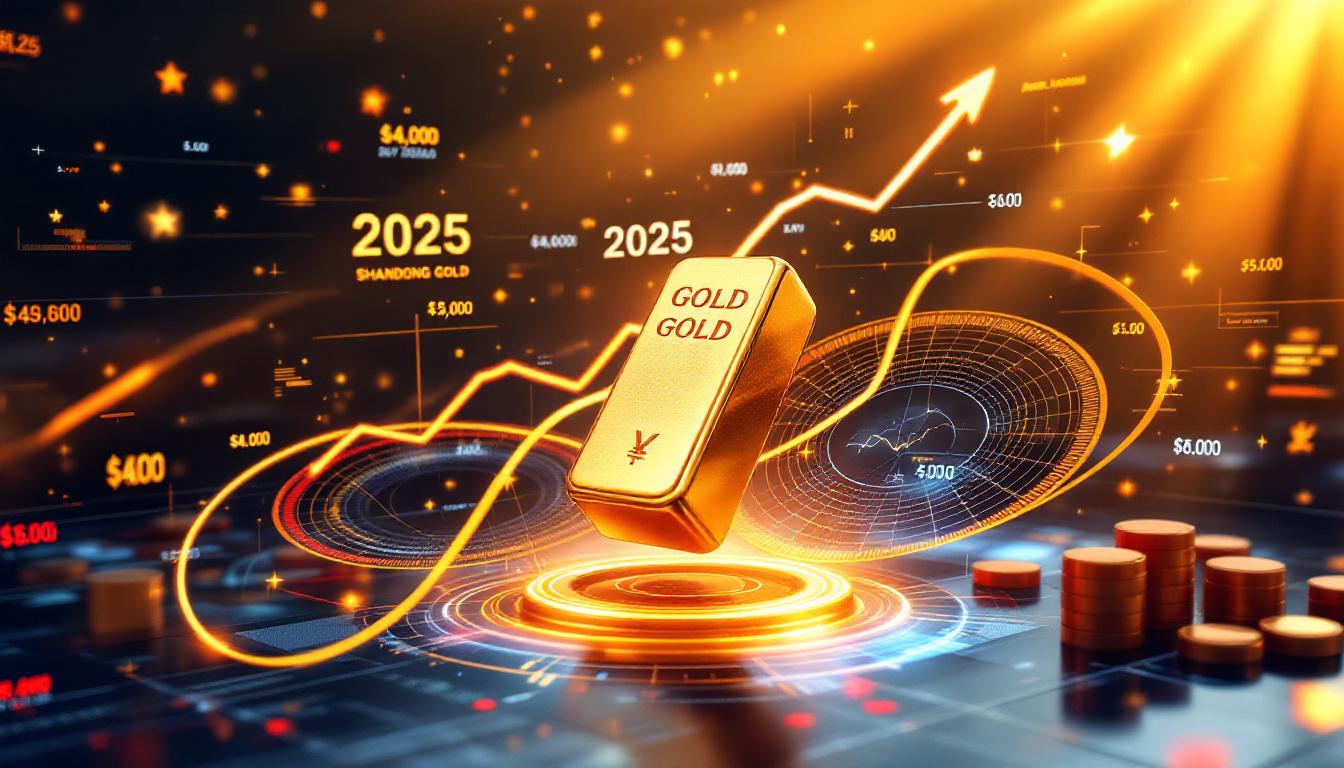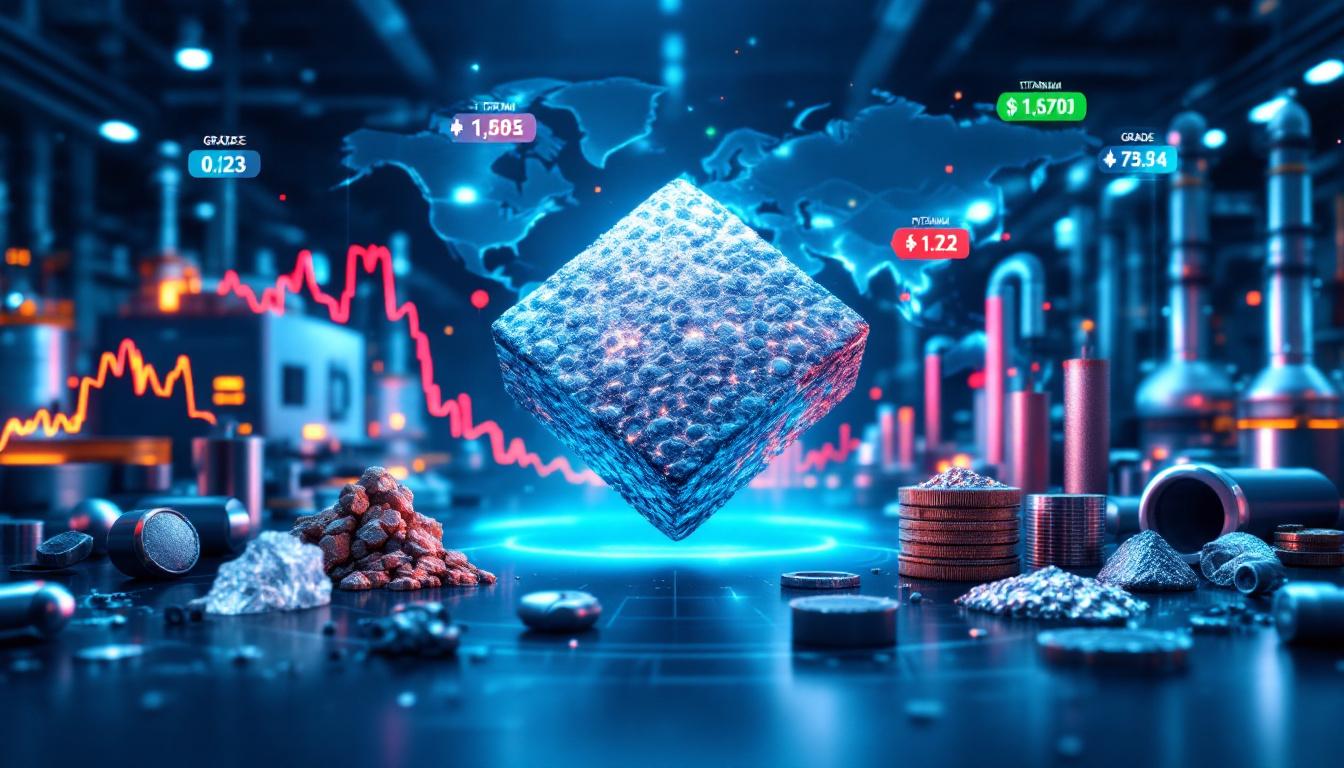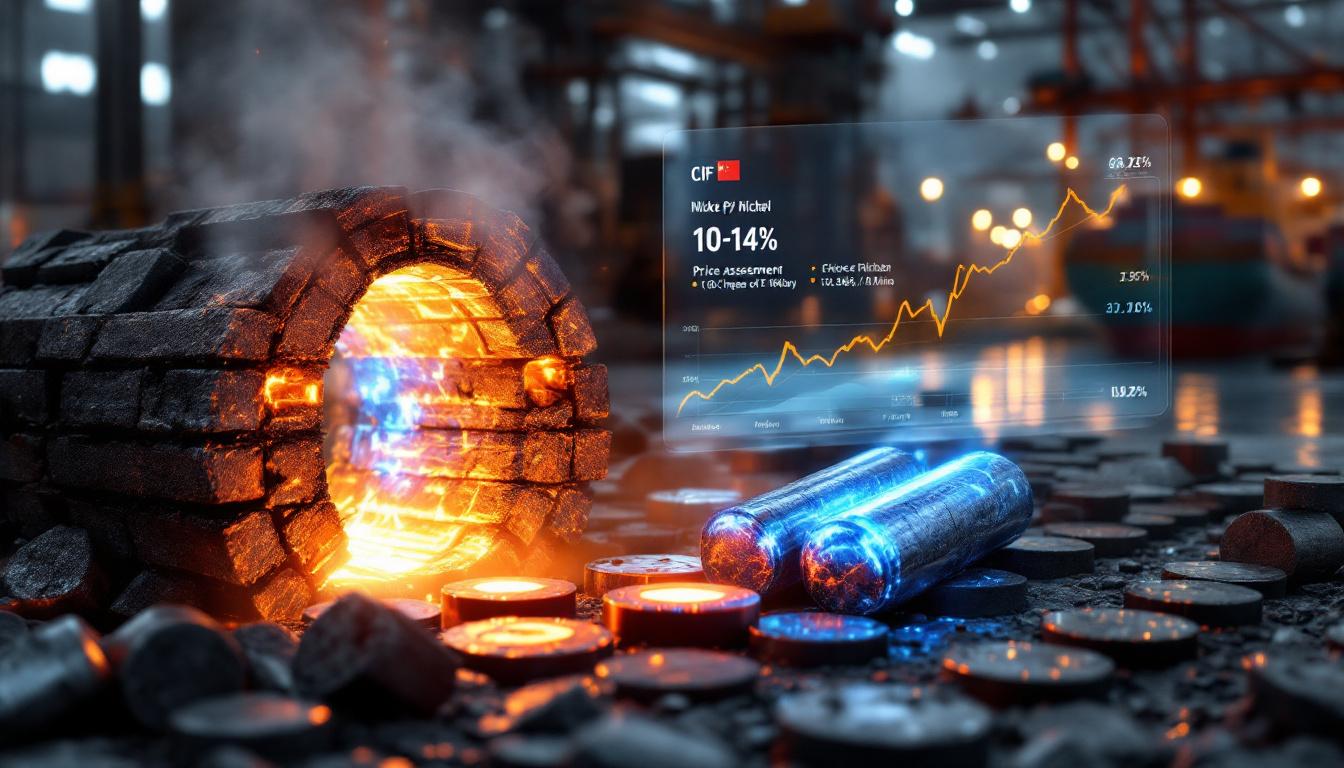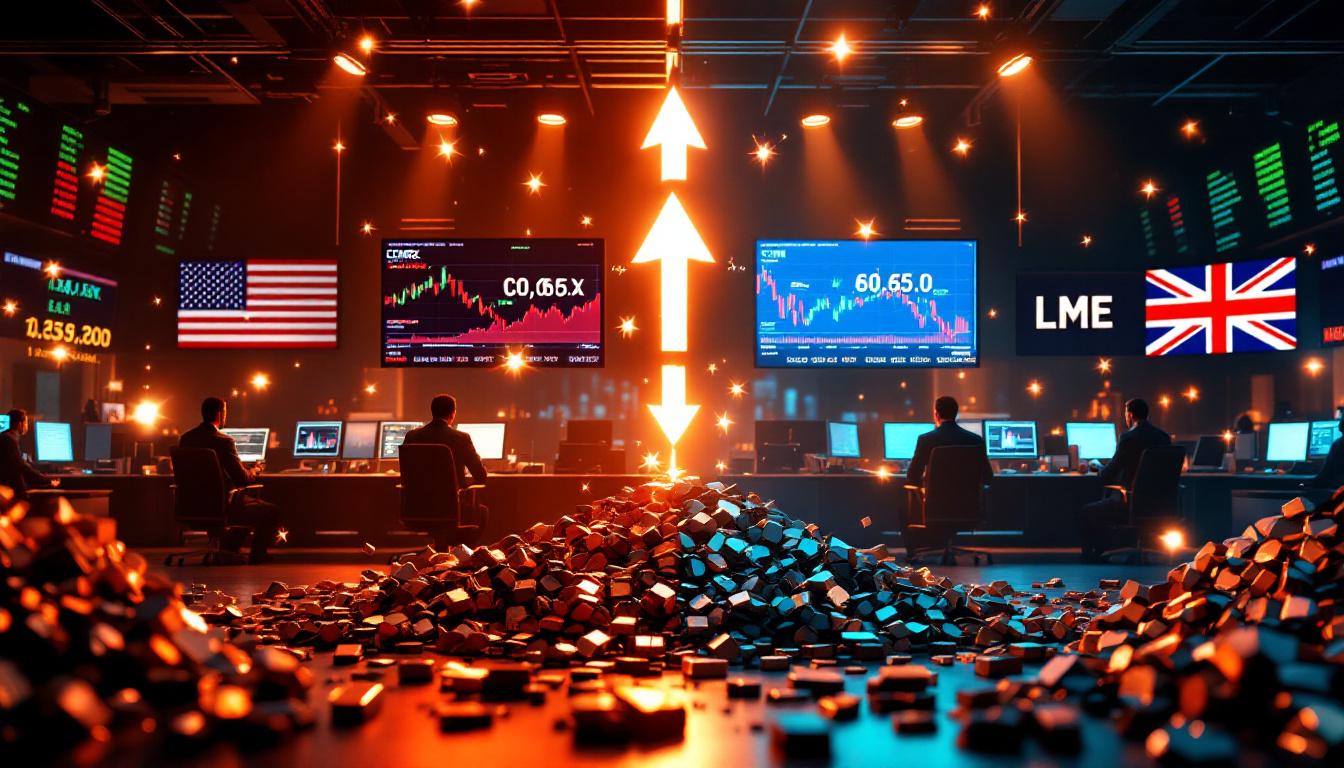Copper Price Slumps into Bear Market: Understanding the 2025 Downturn
The copper market has plunged into bear territory, with prices tumbling for the third consecutive day on Tuesday, April 8, 2025. This sharp decline marks a 20% drop from the record highs reached in late March 2025, officially confirming a bear market. May delivery copper on the COMEX fell dramatically to $4.156 per pound ($9,143 per tonne), representing the most significant three-day loss in copper price history according to Bloomberg data.
The dramatic selloff has sent shockwaves through commodity markets globally, creating uncertainty for miners, manufacturers, and investors alike. Industry experts are now divided on whether this represents a temporary correction or the beginning of a more prolonged downturn in the global copper market outlook.
The 20% Decline: Defining a Bear Market
In commodity trading, a bear market is officially declared when prices fall 20% or more from recent peaks. Copper's descent below this critical threshold on April 8 confirmed what many traders had feared – the metal had entered bear market territory. The decline gathered momentum throughout the week, with sellers dominating trading sessions across major exchanges.
The copper price collapse is particularly notable for its velocity. Bloomberg data indicates that the three-day plunge represents the steepest decline over such a period in copper trading history. Trading volumes surged to more than twice the 30-day average as investors rushed to minimize exposure.
Technically, copper prices have now retreated to levels not seen since early 2024, erasing more than a year of gains in just a matter of days. Chart analysis shows critical support levels were breached with unusual speed, triggering algorithmic selling that further accelerated the decline.
What Triggered the Copper Price Collapse?
The primary catalyst for copper's dramatic fall appears to be the Trump administration's announcement of substantial new tariffs on industrial imports. These measures, revealed on April 3, 2025, have ignited fears of a potential global trade war that could severely impact economic growth and industrial production.
Copper, often described as having a "PhD in economics" for its ability to reflect global economic health, reacted immediately to the tariff news. The metal is particularly sensitive to trade tensions due to its extensive use in manufacturing, construction, and electronics – sectors that rely heavily on international supply chains.
Adding to the bearish sentiment, recent economic indicators from China – which consumes approximately 50% of global copper production – have disappointed investors. Manufacturing PMI data released last week fell below expectations, registering 48.6 compared to the forecast 50.2, indicating contraction rather than the anticipated expansion.
"The combination of trade war fears and softening Chinese demand creates a perfect storm for copper prices," noted commodities analyst James Wilson. "Markets are now pricing in both immediate demand destruction and longer-term growth impediments."
Geopolitical tensions in key copper-producing regions have further complicated the outlook. Civil unrest in Peru's mining districts and regulatory uncertainties in Chile's copper trends have raised questions about supply stability despite current price weakness.
Expert Analysis: Industry Perspectives
Industry experts offer contrasting views on the copper market's future trajectory. Sabrin Chowdhury, Head of Commodities at BMI, Fitch Solutions, has warned that metals face "significant pressure" in the current economic climate.
"We anticipate continued downward pressure on copper prices in the coming weeks as market participants digest the implications of these tariffs," Chowdhury stated. "Should this escalate into a full-blown trade war, the impact on metals demand would be severe and potentially prolonged."
Chowdhury's analysis suggests that traditional consumption patterns have already been disrupted, with manufacturers adopting a wait-and-see approach before committing to major copper purchases.
In contrast, Iván Arriagada, CEO of Chilean copper giant Antofagasta, maintains a more optimistic outlook. "While short-term volatility is inevitable, fundamental supply constraints remain unchanged," Arriagada declared during an industry conference call on Wednesday.
Arriagada emphasized that copper's role in the green energy transition and artificial intelligence infrastructure offers significant long-term support. "Even with temporary demand disruptions, the structural deficit in copper supply relative to these emerging sectors presents a compelling case for price recovery."
According to Antofagasta's internal analysis, the average AI data center requires 2-3 times more copper than traditional server facilities, while electric vehicles use up to four times the copper content of internal combustion engines.
How Are Copper Markets Responding to Tariff Threats?
The investor selloff began abruptly on Thursday, April 4, 2025, immediately following the tariff announcement. The initial 6% drop triggered technical selling, which expanded into the massive three-day decline that has defined this market correction.
Trading volumes on the London Metal Exchange (LME) have surged to 325,000 lots daily, nearly triple the typical activity level. Open interest in copper futures has expanded by 18%, suggesting that new short positions are being established rather than merely liquidation of existing longs.
Physical copper premiums – the amount buyers pay above exchange prices for immediate delivery – have collapsed by 65% in Shanghai, indicating severe demand destruction in the world's largest copper-consuming market. Traders report that Chinese fabricators have postponed deliveries where contractually possible.
Market sentiment indicators show extreme pessimism, with the copper put/call ratio reaching 3.2:1, the highest level since the pandemic-induced selloff of 2020. This suggests traders are heavily hedging against further declines rather than positioning for a bounce.
"We're seeing panic rather than rational price discovery," commented veteran metals trader Michael Chen. "The speed of this correction suggests algorithmic trading is amplifying fundamental concerns, potentially creating oversold conditions in the near term."
The Supply-Demand Balance: Long-Term Outlook
Despite the current price collapse, structural factors in the copper market remain supportive over a multi-year horizon. Antofagasta's CEO predicts that copper supplies will remain tight regardless of short-term price fluctuations, citing chronic underinvestment in mine development over the past decade.
Mining industry data reveals that the average grade of copper ore has declined by approximately 25% since 2000, requiring more extensive processing to yield the same metal output. Meanwhile, development timelines for new copper projects have stretched to 8-12 years from discovery to production, compared to 5-7 years historically.
The booming AI sector presents an emerging demand source that could significantly offset traditional consumption declines. According to the International Copper Association, a single AI data center campus can contain up to 1,000 tonnes of copper in its infrastructure, while the global rollout of 5G networks is expected to consume an additional 250,000 tonnes annually.
The green energy transition remains copper-intensive despite economic uncertainties. Each offshore wind turbine contains approximately 8 tonnes of copper, while solar installations require roughly 5 tonnes per megawatt. Electric vehicle production, though temporarily slowed by economic concerns, still represents a fundamental shift in copper price dynamics.
Interestingly, some analysts suggest that Trump administration policies could ultimately create a more favorable mining investment environment through reduced permitting obstacles. "Regulatory streamlining for domestic resource development was a hallmark of the previous Trump term," noted mining policy expert Sarah Johnson. "Similar measures could accelerate U.S. copper project development, though not quickly enough to address near-term supply constraints."
What Does This Mean for Global Copper Production?
Chilean producers maintain a broadly positive long-term outlook despite the current market turbulence. The country's mining ministry projects that national copper output will increase by 15% by 2030, contingent on approximately $70 billion in new investment.
Supply constraints appear likely to persist regardless of near-term price corrections. Major miners report that sustaining capital expenditure requirements have increased by nearly 35% since 2020 due to inflation in equipment, energy, and labor costs.
Anglo American executives have publicly urged faster permitting processes in Chile to address looming copper supply gaps. "The world faces a potential 8 million tonne annual deficit by 2032 if current project pipelines and approval timelines remain unchanged," stated the company's copper division head in a recent industry presentation.
Mining companies are responding to price volatility by focusing on operational efficiency rather than output reductions. Modern techniques like autonomous haulage and AI-optimized processing have helped reduce production costs at tier-one assets by approximately 12% over the past three years, providing some buffer against price weakness.
Industry consolidation appears increasingly likely in this environment, with mid-tier producers vulnerable to acquisition. Market analysts have identified at least five copper miners with market capitalizations between $1-5 billion that could become takeover targets if share prices continue to decline in response to weak copper prices slumps into bear market amid tariff fears.
FAQ About the Copper Market Downturn
What defines a bear market in commodity trading?
A bear market is technically defined as a 20% drop from a recent peak price. In the case of copper, prices have fallen 20% from their late March 2025 highs, officially entering bear market territory on April 8, 2025. This definition is consistent across commodity markets and provides a standardized benchmark for measuring significant downturns.
How do tariffs impact copper prices?
Tariffs significantly impact copper prices through multiple mechanisms. They disrupt global trade flows by creating artificial barriers, increasing costs for manufacturers who use copper in production. This cost increase typically results in reduced consumption as manufacturers seek alternatives or delay production.
Tariffs also create uncertainty about future demand patterns, causing traders and investors to adopt more cautious positions. When implemented between major economies, tariffs can potentially slow global economic growth, reducing industrial activity that drives copper consumption.
The copper market is particularly sensitive to tariffs affecting China-U.S. trade, as these economies represent the largest consumption and influence centers for the metal.
Will copper prices recover in 2025?
Industry experts remain divided on the recovery timeline. Negative factors including trade war fears, recession concerns, and geopolitical tensions suggest continued pressure through at least Q3 2025. Current market pricing suggests futures contracts for December 2025 delivery trade at a 7% premium to spot prices, indicating some expectation of recovery.
Positive factors including tight physical supply, growing AI sector demand, and ongoing green energy transition needs provide fundamental support. Mining executives predominantly view the current correction as temporary, with most maintaining production guidance and development schedules.
The consensus among commodity research departments at major banks suggests copper may find a floor around $8,800 per tonne before gradually recovering in late 2025, contingent on resolution of trade tensions.
How does copper price volatility affect mining companies?
Mining companies face several challenges during periods of copper price volatility. Operational planning becomes extremely difficult when revenue projections can shift by millions of dollars within days. Investment decisions for capital-intensive projects face heightened uncertainty, often leading to delays in final investment decisions for new developments.
Companies frequently respond by implementing hedging strategies to lock in prices for a portion of production, though this limits upside potential if prices recover. Share prices typically experience amplified volatility relative to copper price movements, with leverage to the commodity creating exaggerated investor reactions.
Balance sheet strength becomes critical during downturns, with highly-leveraged operators facing potential covenant breaches if prices remain depressed for extended periods. History shows that copper market corrections often trigger strategic shifts, with companies redirecting focus toward cost optimization and high-grade resource development while copper smelting insights become increasingly valuable for market analysis.
Rio Tinto's copper strategy highlights how major miners are repositioning for long-term growth despite current market volatility, demonstrating confidence in the metal's fundamental outlook beyond the immediate tariff concerns.
Ready to Find the Next Major Mining Opportunity Despite Market Volatility?
Stay ahead of market movements with real-time alerts on significant ASX mineral discoveries through Discovery Alert's proprietary Discovery IQ model. Understand why historic discoveries can generate substantial returns even during commodity downturns by visiting Discovery Alert's dedicated discoveries page.




